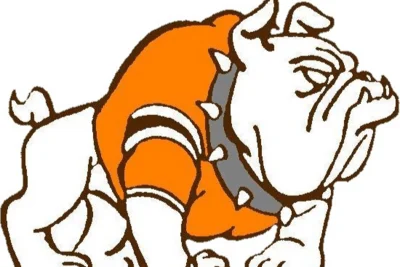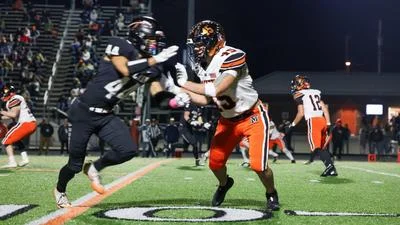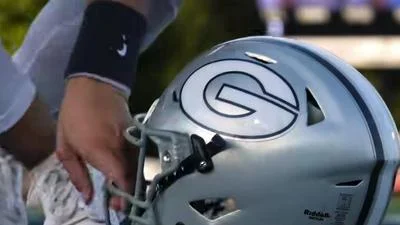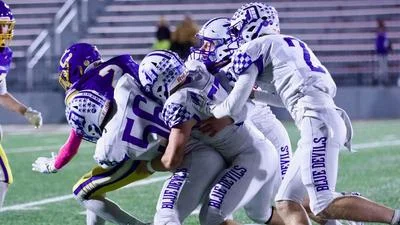Let’s talk all-star games and skills competition.
Last week, the 93rd Major League Baseball All-Star Game was exciting to the end. Down 2-1, Colorado Rockies catcher Elias Diaz belted a two-run home run off Baltimore’s Felix Bautista — who had allowed just three home runs in 42 innings all season — in the top of the eighth inning to give the National League the lead. Phillies closer Craig Kimbrel successfully walked the tight rope in the bottom of the ninth to pitch the NL to a 3-2 win over the AL.
A day earlier, Toronto’s Vladimir Guerrero, Jr. was crowned the 2023 Home Run Derby champ, taking down hometown hero Julio Rodríguez in the semifinals, after the Seattle Mariner had set a derby record with 41 homers in the opening round. Guerrero bested Tampa’s Randy Arozarena 25-23 in the finals.
Exciting stuff.
Baseball all-star games started in the early days of the game, when teams put on benefits for the families of players who died unexpectedly. The Addie Joss Benefit Game of 1911 raised $12,914 for the Joss family (worth nearly $415,000 in today’s economic climate.) And barnstorming teams of all-stars traveled the country to play and make money for underpaid players (and superstars) of the day.
The first true MLB All-Star Game was held on July 6, 1933, at Chicago’s Comiskey Park as part of the 1933 World’s Fair. It was intended to be a one-time event, but its success transformed it into a yearly game known as the Midsummer Classic. The American League prevailed 4-2 in the first one, in front of 49,000 fans. The proceeds ($45,000 in net gate receipts – worth more than $1.05 million today) from the game went to a charity for disabled and needy major league players. Babe Ruth was the star, hitting a two-run home run to right field in the bottom of the third inning and catching a fly ball up against the scoreboard in right-center field in the top of the eighth inning.
Twenty of the game's 36 All-Stars eventually made the Hall of Fame. From 1959 to 1962, two All-Star Games were held each season, to increase money going to the players' pension fund. This practice ended after the owners agreed to give the players a larger share of the income from a single game.
The game used to be a single showcase to see the likes of Mickey Mantle, Willie Mays, Henry Aaron, Joe DiMaggio, Stan Musial, Ted Williams, Roberto Clemente, Bob Gibson and Sandy Koufax perform against each other on one field. It was the only time other than in spring training or the World Series that American League and National League players competed against each other. To many fans, it was a highlight of the year.
But with expanded ways to see your favorite players and every American League team playing every National League team at least three times this year – 46 games in all – has the novelty worn off? In 1980, 20.5 million households clicked on the game, 20.4 million households, and 34 million viewers, saw the 1982 game on TV. In 1970, a 54-share tuned in, and the 1976 game saw a 53-share. The 1976 and 1980 games entertained more than 36 million viewers each.
This season's Midsummer Classic averaged a record-low 3.9 rating and 7.01 million viewers, down 7% from last year's previous record-lows of 4.21 and 7.51 million, according to Sports Media Watch. The MLB All-Star Game has now set a record-low in ratings with five of the past seven games (2016, 2018, 2019, 2022, 2023).
MLB tried to bolster interest with the MLB draft and the Home Run Derby, a staple since 1985. Inspired by a 1960 TV show that featured Mantle against Mays in the opening telecast among 26 showdowns, the All-Star Home Run Derby was not televised until 1991. The game has seen rule changes and refinements, and now home runs are blasted into the seats with frequency and seemingly at the whim and will of the players … at times diluting the skill and excitement with mundane repetitiveness.
Is this “can’t-miss” TV, or “so-what” TV for you? Would you rather see additional skills contests, in the same fashion as those at NBA all-star games (3-point contest, slam dunk contest, dribbling/passing events), or NHL all-star games (hardest shot, shot accuracy, speed skating, breakaway challenge)?
Even the NFL augmented its festivities with celebrity dodgeball, flag football, precision passing and best catch competitions.
It can be argued that the most natural, true all-star competition is in baseball as every player showcases his best – pitcher vs. hitter, runner vs. catcher, fielder vs. batter. They play defense. In basketball, hockey and football, defense takes a backseat with limited blocking, checking or tight D. And in football, players from the two Super Bowl teams are not even in the competition, as they play for all the marbles the next week.
Viewership is down across all major sports. In the NFL, 2023 viewership declined by 7.5% from 2022, to 6.2 million, and 2022’s 6.7 million had been the lowest since 2006. In the NBA, the 2023 All-Star game was watched by 4.6 million viewers, a drop from the 6.3 million viewers who tuned into the previous year's game. In the NHL, viewership actually increased from the prior year, drawing 1.5 million viewers, a robust 31% increase from the miniscule viewership of 1.146 million of 2022, which was the least-watched edition of the game since 2015, but it ranks the lowest total viewership of all major sports.
The traditional American League vs. National League baseball setup may be on the cusp of changing, as it is rumored that baseball’s next expansion – to 32 teams, proposed for about four years from now – will create new division and conference alignments.
Do you or will you care about this event?
Have all-star games, home run derbies, slam dunk contests and skills competitions become old and of no interest? Or do you anticipate these TV events as you do the Super Bowl and World Series? Let me know at mike.blake@mountvernonnews.com.







